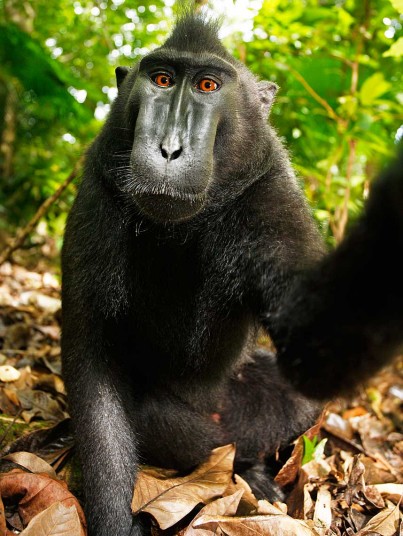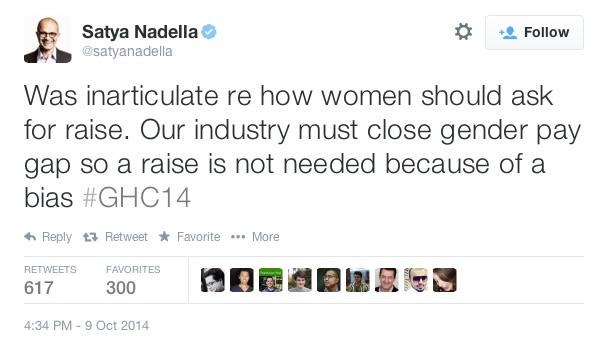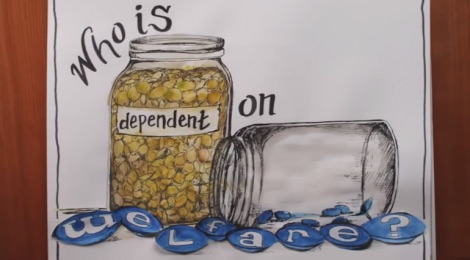Stocking Stuffers for the Holidays
No lumps of coal for this blog’s readers. You’ve all been good boys and girls, from my perspective. So I offer you a few hors d’oeuvres, choice bits and pieces that don’t fit anywhere else but seem too tasty to ignore.
•
Why, as someone who has spent his life overworked and underpaid in the “culture industry,” do I not find it heartening that Merriam-Webster, the dictionary people, have declared culture the 2014 word of the year? I’m not reaching for my revolver, mind you — just asking.
Basing their nominations on frequency of lookups this year on Merriam-Webster.com, they offer, as runners-up, nostalgia, followed by insidious, legacy, feminism and the French “je ne sais quoi.” Perhaps my unease stems from the fact that this evidence of our culture’s insidious nostalgia for the legacy of feminism leaves me feeling a definite je ne sais quoi.
•
On the selfies front: Having tracked the futile efforts of photographer David Slater to claim copyright of several selfies made with his camera by a macaque monkey, and having raised the question of whether animals themselves might have some claim to copyright and subsidiary rights to their images, I note with regret that we won’t soon get an answer, even if provisional, from the U.S. judicial system.
Earlier this year, Attorney Steven Wise, founder of the Nonhuman Rights Project (NhRP), initiated a lawsuit on behalf of Tommy, a 26-year-old chimp currently kept in a cage in upstate New York. Wise argued that Tommy, along with other “animals with human qualities, such as chimps, deserve basic rights, including freedom from imprisonment.” In short, he proposed that such creatures should enjoy the status of “legal personhood.” (See the October 10, 2014 ABC News report, “New York Court Hears Case of ‘Personhood’ for Tommy the Chimp.”)
In a decision that disappointed chimps and other “animals with human qualities” everywhere, the New York State appeals court ruled unanimously on December 4 denying Tommy a writ of habeas corpus and “legal personhood.” Though the court didn’t address the question of copyright in its decision, that going beyond the scope of this suit, it would follow logically if and when the concept of animal rights gets secured within the legal system. We haven’t heard the last of this; Argentina has actually forged ahead of us on this front, granting limited rights to an ape as a “non-human person … with probable cognitive capability.”
•
Elsewhere among the higher primates, Kim Kardashian, intent on extending her 15 minutes of fame indefinitely (or at least milking it for all it’s worth), will release a book of selfies next April. This gives a whole new meaning to the term “vanity publishing.” Titled Selfish, priced at $19.95, under the prestigious imprint of Rizzoli International Publications, it will run 352 pages and include more than 1,000 selfies — surely as redundant an act as one could conceive for someone whose image has become inescapable. (Like Paris Hilton and countless others presently clogging the culture, Kardashian fits to a T Daniel Boorstin’s classic definition of celebrity: “someone who is well-known for being well-known.”
Meanwhile, achieving her only 15 minutes of fame, Sylwia Rajchel, a 23-year-old Polish medical student on vacation in Spain, died when she fell from the Puente de Triana bridge in the city of Seville while attempting a selfie. She joins Oscar Otero Aguilar (gunshot to the head) and Karen Hernández (drowning), both of Mexico; an unidentified man electrocuted on top of a train in Spain; an unidentified Polish couple vacationing in Portugal who fell off the cliffs of Cabo Da Roca; a 17-year-old Russian girl, Xenia Ignatyeva, electrocuted when she fell off a bridge; and, by now, hundreds of others killed or injured while making selfies. Hey, people — let’s be careful out there.
What does it all signify? See “Selfies Linked to Narcissism, Addiction and Mental Illness, Say Scientists,” by Fiona Keating, International Business Times, March 23, 2014. Lee Friedlander and Lucas Samaras, what have you wrought?
With the famous and celebrated all taking selfies, average people have begun to pick up the slack by farming this out. See the Associated Press report from June 10, 2014, “Picture perfect: People hiring professional photographers to capture everyday activities.” Its subtitle: “Families who don’t want to be stuck with blurry cell phone pictures are turning to the pros to photograph ordinary experiences and outings.” Whereas, presumably, the famous and celebrated, who participate constantly in public and private shoots and picture opportunities with professional photographers, and are surfeited with the polished results, find those casually made “blurry cell phone pictures” an entertaining relief.
Weasels on the Loose
On the degradation-of-language front, I noted with interest the news concerning the ridiculous answer Satya Nadella, chief executive officer of Microsoft Corp., gave on October 29 during an on-stage interview by computer scientist Maria Klawe at the 2014 Grace Hopper Celebration of Women in Computing, in response to a question regarding how and when women should ask for raises. “it’s not really about asking for the raise, but knowing and having faith that the system will actually give you the right raises as you go along,” Nadella responded. Going further, he called waiting patiently for your employer to offer a raise “good karma … it’ll come back because somebody’s going to know that’s the kind of person that I want to trust.” (Click here for a video of this conversation. You’ll find Klawe’s question and Nadella’s reply at timestamp 01:34.)
What interests me isn’t that the incoming Microsoft CEO (appointed on February 4, 2014) shows himself dumb as a post re gender inequality in an industry — and, to put a finer point on it, in a mega-corporation — that has always treated women as second-class citizens. Or, conversely, that he displays bottom-line savvy in promoting the management-friendly notion that the corporate world prefers female employees happy to take a passive role in relation to the timing of their promotions and raises and bonuses.
No, I’m fascinated by Nadella’s subsequent claim that he had been “inarticulate.” Inarticulate means “unable to speak distinctly or express oneself clearly.” But Nadella proved perfectly articulate; he expressed himself clearly and distinctly. (Can’t say the same for his tweet, which I find incomprehensible: “[M]ust close gender pay gap so a raise is not needed because of a bias”? )
This reminded me immediately of Paul Ryan’s grotesque claim that Mitt Romney had been “inarticulate” in his infamous “47 percent” speech deriding almost half the citizenry as a way of stroking his own ego and those of his rich backers. There, as in Nadella’s ludicrous proposal, it functions as a weasel word. Beware of any who use it as such, especially if they’re highly placed; we’ll never persuade them to take responsibility for their lives and actions, which makes them extremely dangerous.
As an antidote to the nonsense spouted by this culturally retarded dolt, I heartily recommend “FCKH8: Princesses.” You go, girls! While you’re at it, also check out the time-lapse video from Hollaback!, “10 Hours of Walking in NYC as a Woman.” Compare that to what we might title “10 Hours of Walking in Casablanca as a Woman,” in which a young Moroccan runs the same experiment in her home city. Read the take-no-prisoners speech by Joe Biden on violence against women worldwide. Then you can try this from The Daily Show’s Jessica Williams for dessert.
Keeping an Eye on Himself
If you want to learn something about the broader issues of income inequality, I recommend The #GlobalPOV Project‘s cogent video, “Who is Dependent on Welfare,” with Ananya Roy. Though born in India, like Microsoft’s Nadella, Roy knows too much to pooh-pooh such issues and tell people of any gender anywhere in the world to wait for the corporate state to compensate them fairly for their labor.
On that note, let me add that failed presidential candidate Mitt Romney continues to lie baldfacedly about what he said re the “47 per cent” during the 2012 campaign. (Apparently bearing false witness is consistent with Mormon theology.) Mulling a third run for the White House, Captain Underpants told the New York Times that “My mistake was that I was speaking in a way that reflected back to the man [who asked the question to which he responded]. If I had been able to see the [inconspicuously placed] camera, I would have remembered that I was talking to the whole world, not just the man.”
 In other words, Romney believes his problem lay in the fact that he spoke his honest opinion to a fatcat in a supposedly private gathering of same, and would have said something different to a roomful of average citizens in public. (Apparently hypocrisy is consistent with Mormon theology.) According to the Times‘s Mark Leibovich, “Romney told me that the statement came out wrong, because it was an attempt to placate a rambling supporter who was saying that Obama voters were essentially deadbeats.” Right.
In other words, Romney believes his problem lay in the fact that he spoke his honest opinion to a fatcat in a supposedly private gathering of same, and would have said something different to a roomful of average citizens in public. (Apparently hypocrisy is consistent with Mormon theology.) According to the Times‘s Mark Leibovich, “Romney told me that the statement came out wrong, because it was an attempt to placate a rambling supporter who was saying that Obama voters were essentially deadbeats.” Right.
Because “I want to be reminded that this is not off the cuff,” Romney told the Times that, should he decide to throw his hat in the ring once again, “I’d insist that you literally had a camera on me at all times.” In short, he would hire a personal videographer or “tracker” to follow him around, as a reminder not to go off-script. See “Mitt Isn’t Ready to Call It Quits” by Mark Leibovich, New York Times, September 30, 2014. Presumably, release of any of that video would require approval from the committee that vetted the Mittster’s tweets; see “Mitt Romney’s campaign tweets had to be approved by 22 different people” by Andrew Prokop at Vox, December 5, 2014.
Thus does Romney burnish his image toward a possible 2016 campaign. My prediction: That will again manifest itself as a contest in which visual imagery plays a key role; I will cover it as such, as I did with the 2012 election. And, if selected as the Republic Party’s candidate, Romney, Inc. will once again get its ass whipped, making him the first candidate defeated in separate races by an African-American and a woman.
Because You Definitely Needed Something to Make You Feel Really Old Dept.
For that just-right holiday-season blend of the innocent and the depressing, I recommend this episode of the weekly YouTube show Kids React — “Kids React to Old Cameras.” (There’s also a “bonus video” with outtakes.) For all the subjects, it’s their first encounter with an analog camera — a 1998 Canon Sure Shot 85 Zoom — and a roll of film. Watch ’em and weep. “First you pay for the camera, then you pay for the film, then you get them developed, then you get your pictures?” And “People didn’t even know what a selfie was when this was around!”
Note: The video contains one grievous error. It asserts (in the caption you’ll find embedded in the attached screenshot) that “The first camera was invented by Alhazen, a Persian scientist, around 1000 AD, and was known as the ‘pinhole camera’ or ‘Camera Obscura.’ This early prototype was essentially a box with a small hole on one side to allow in light, which projected an upside-down image onto the opposite wall. A mirror could then be used to flip the image upright.”
In fact, boxes don’t have walls, pinhole cameras don’t have mirrors to “flip the image upright,” and the Arab scholar Alhazen didn’t invent the camera. He did observe (circa 1000 A.D.) and write about what subsequently became known as the “pinhole effect,” in which a small opening in the wall of a darkened room (“camera obscura” in Latin) casts an upside-down and inverted image of the scene outside on the opposite wall. Moreover, the Chinese philosopher Mo Ti noted the same natural phenomenon circa 400 BCE.
Because You Needed Something to Cheer You Up After That
Thanks to noted photographer and teacher Julio Mitchel for passing along a link to this heartwarming event report: “Have Art Fairs Destroyed Art? Zombie Abstraction and Dumb Painting Ruled in Miami,” by Christian Viveros-Fauné at Artnet, December 8, 2014.
The Spirit of Giving
 If you’re looking for a worthy cause to which to make a tax-deductible year-end donation, allow me to recommend the National Coalition Against Censorship, who wage a tireless battle against the suppression of free and unfettered expression. Click here for their annual roundup, “The Damned Dozens: Art Censorship in 2014,” which includes a number of photographic works.
If you’re looking for a worthy cause to which to make a tax-deductible year-end donation, allow me to recommend the National Coalition Against Censorship, who wage a tireless battle against the suppression of free and unfettered expression. Click here for their annual roundup, “The Damned Dozens: Art Censorship in 2014,” which includes a number of photographic works.
Finally, though I’m not a tax-deductible entity, I’ll welcome any amount you choose to donate via the PayPal button atop the right-hand column of this blog page. For $50, I’ll identify you as the supporter of a future post, and link to your website.
Travel safely if you’re on the road. Ho ho ho to all!













What a potpourri! Thanks for the collection of readies! – Melinda